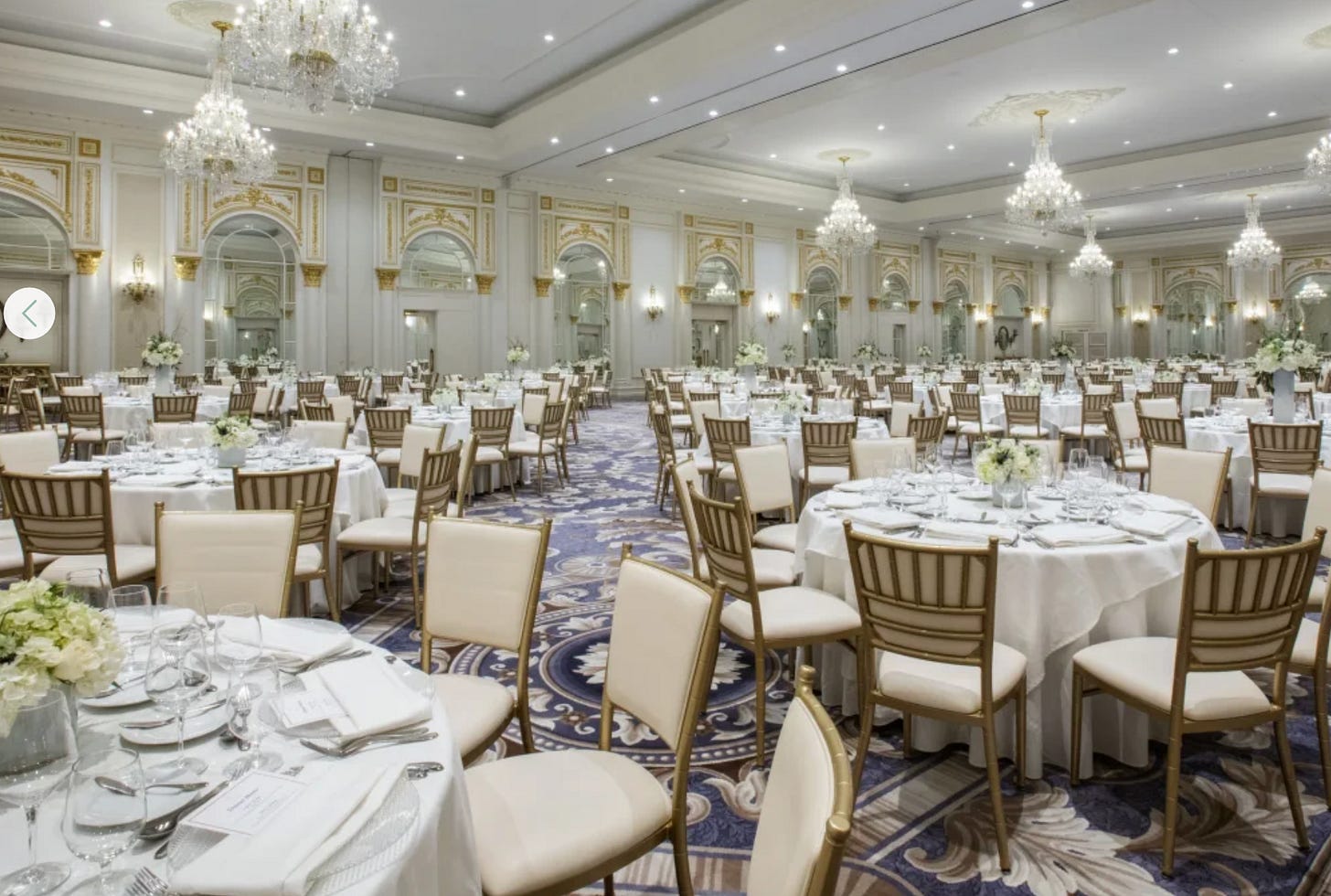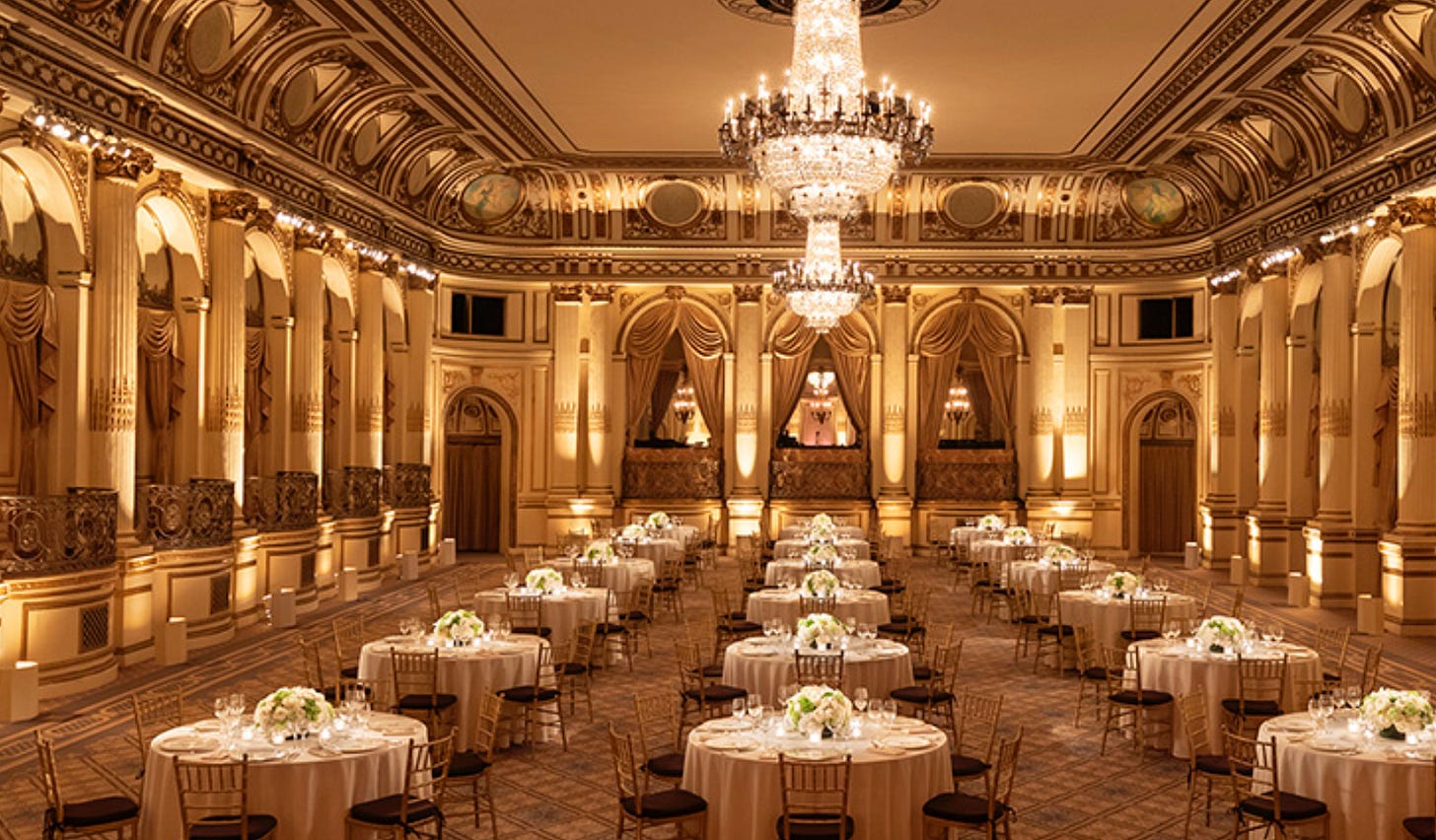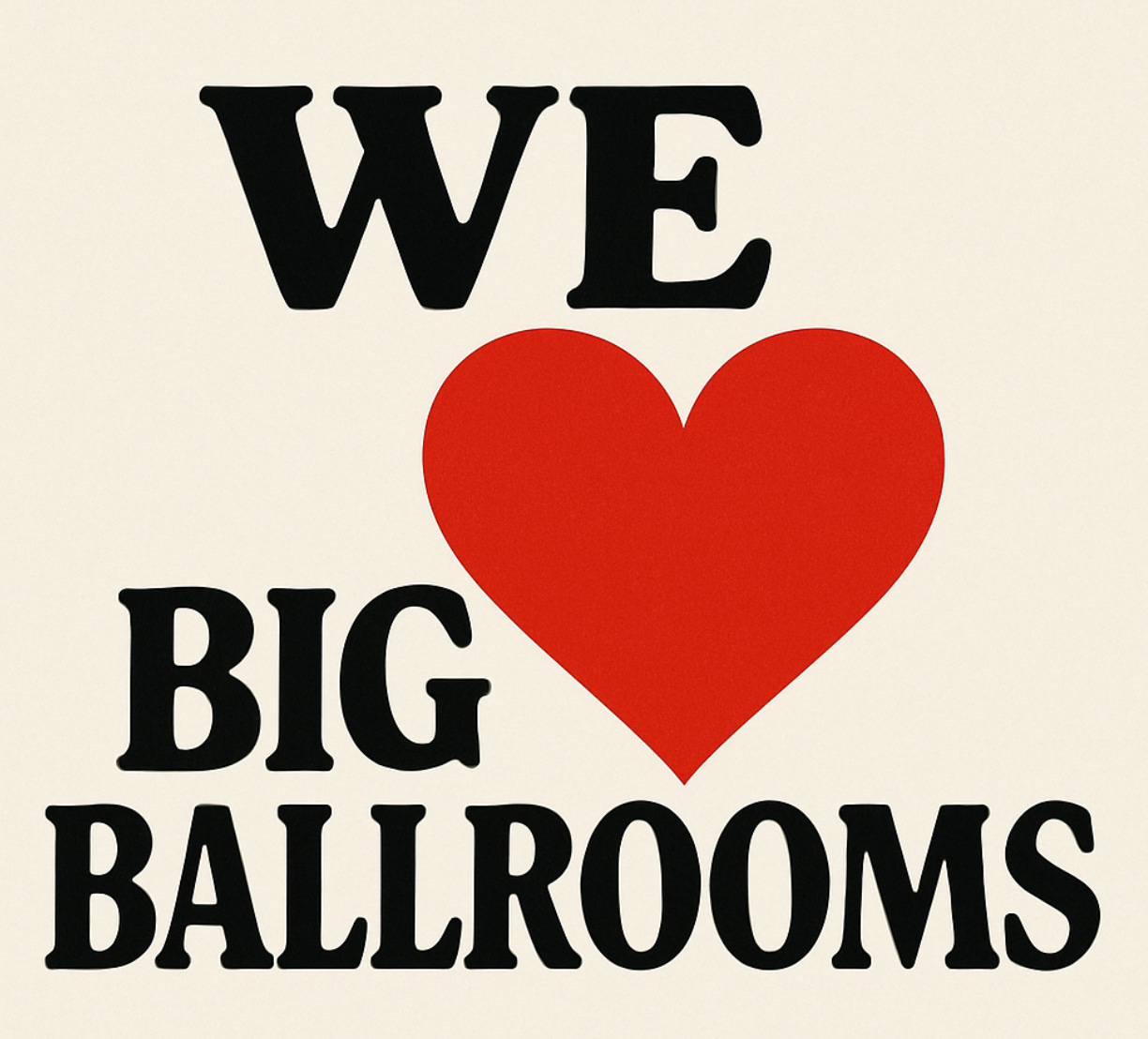Behind the New White House Ballroom
Trump’s $100 Million Addition Isn’t Just a Room—It’s a Statement
This is the story of a ballroom that began with a phone call—not from a chief of protocol or a first lady, but from Donald J. Trump, back in 2011, dialing up Obama senior advisor David Axelrod with the gall and confidence of a man who viewed the White House not just as a seat of power, but as a production set in need of better lighting. The pitch was as simple as it was audacious: let me build a proper ballroom for the White House. Permanent. Regal. Free. No more tents on the South Lawn. No more makeshift vinyl venues for visiting heads of state. Just a world-class, gold-draped, chandelier-hung space worthy of the brand America.
At the time, Trump was still publicly identifying as a Democrat—or at least Democrat-leaning. He had donated generously to Democratic causes and candidates, including Chuck Schumer, Hillary Clinton, and Barack Obama himself. He famously contributed to Obama's 2008 inauguration committee and had said in a 2004 CNN interview, "In many cases, I probably identify more as a Democrat." The ballroom offer, then, wasn’t the gesture of a partisan antagonist. It was the gesture of a donor, a stage designer, a self-styled statesman of ambiance, trying to lend his gilded touch to the executive branch.
Axelrod, bemused, passed the message along to White House Social Secretary Juliana Smoot, who acknowledged it with all the ceremony of a paperclip. It went nowhere. The Obama aesthetic was clean, cerebral, modern—more Eames than Empire. Letting Trump touch the architecture of the presidency would have been like asking Liberace to redesign a Supreme Court chamber.
But Donald Trump never forgets a design slight.
Fast forward to 2025. The tents are long gone, the Rose Garden has been torn up yet again, and construction is underway for a new ballroom—Trump's ballroom. The offer he once made as a gesture is now being built as a legacy. He’s calling it the most beautiful ballroom in the world. He says he’s paying for it himself. And he claims the price tag could hit $100 million. At first blush, the number sounds classic Trump: inflated, performative, golden-hued. But for anyone who's studied high-end venue construction, the estimate is less delusional than dramatic.
in top-tier hotels typically range from $300 to $600 per square foot. A 13,000-square-foot build—roughly the size of the Presidential Ballroom at the now-defunct Trump International Hotel in Washington—might begin around $6 million in raw construction. But once you add security, historic-site permissions, bespoke millwork, ceremonial detailing, imported chandeliers, hand-laid marble, and the kind of Baroque swagger Trump favors, the cost begins to inflate faster than a branded blimp. Toss in AV rigging, lighting grids, HVAC overhauls, and diplomatic-ready infrastructure? $100 million becomes a plausible, if theatrical, figure.
And that’s exactly the point. Trump doesn’t build spaces. He stages them.
To understand why this ballroom matters—why it fits into the Trump mythos so perfectly—you have to recognize something that polite political analysis usually misses: Donald Trump is, above all else, an event organizer. Not in the union crew sense. In the orchestrator-of-attention sense. From Mar-a-Lago to Miss Universe, from The Apprentice to his campaign rallies, Trump has always been less real estate mogul than ringmaster. His great genius isn’t in development—it’s in ambiance. In energy. In flow.
Each campaign rally was a Vegas residency. Each televised boardroom scene a summit. He doesn’t throw events. He builds atmospheres. And the spaces he constructs reflect that: theatrical, overstated, maximalist, and unapologetically composed to make everyone else look slightly underdressed. You see it in the Mar-a-Lago ballroom, with its Versailles-style mirrors and gilded sconces. You see it in the D.C. hotel ballroom, designed by Beyer Blinder Belle with interiors by Hirsch Bedner Associates, where no corner goes unpolished and no ceiling unadorned. Those spaces weren’t made to disappear into the background of a diplomatic dinner. They were designed to upstage the guest list.
And now that aesthetic—that worldview—is being carted directly into the most symbolically charged lawn in American politics. While the actual design of the new White House ballroom has not yet been made public, and we cannot say definitively whether it will be windowless or embrace any modern lighting or architectural standards, all signs—from Trump's history to his stated preferences—suggest a return to theatrical, fixed-form grandeur. While other presidents have left behind libraries and legislation, Trump is leaving behind a ballroom. not through documents or doctrine, but through décor. He once offered it to Obama as a kind of extravagant hospitality. Now he builds it as a sovereign space. A room that doesn’t adapt to the times, but asks the times to adapt to it.
You saw this philosophy long before politics, when Trump acquired the Plaza Hotel in the late 1980s. That was the prototype. He treated the landmark not as a property but as a canvas. He brought in Ivana to oversee the gilded resurrection, lining the Edwardian Room and Grand Ballroom with silk wall coverings, gold-plated everything, imported crystal, and the kind of opulence that didn’t whisper "luxury" but shouted "arrival." As he put it: "It's the Mona Lisa. I just want to frame it properly."
That same eye—and ego—shaped Mar-a-Lago. And Trump Tower. And the D.C. hotel. Rooms, in his world, aren’t built to hold events. They are the events.
When those mirrored doors open—and they will, no doubt with a camera-ready reveal and a dignitary-laden guest list—we won’t be seeing just a ballroom. We’ll be seeing the stage on which Donald Trump always meant to exit: framed in gold, lit from above, and looking very much like the final act of a show he never stopped producing.
It is, in every sense, the perfect Gathering Point story.






He will be the first and only president to spend more money than anyone in the history of the US. He may have his palace as he see’s it now, but eventually he won’t rule the roost. He will be the man that scared the world away and threatened democracy and humanity at its core. They will throw stones at him sometime in the future and no one will stop it. He won’t have a legacy, because nothing he does makes him worthy of one. Still want to talk about this ogre of a man?